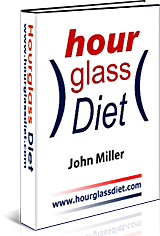You won’t have heard of the term ‘garbohydrate’ before. It’s a new word to describe the high energy density, refined carbohydrates, flour and sugar – on their own, combined and/or mixed with fat.
You can substitute the word ‘garbohydrate’ with the word ‘junk’. We’re drowning in a sea of junk food.
Incorporated in the text below is an indication of the energy content of the various garbohydrates in kilojoules/100gms. If you’re more familiar with calories, just divide the number of kilojoules by 4. You need around 8,000 Kj a day to keep the body ticking over nicely, less if you’re sedentary and more if you’re vigorously active.
Keep in mind that in round figures a carrot has 120Kj/100gms, a potato 340Kj/100gms and an apple 220KJ/100gms.
1. Flour on its own – 1470Kj/100gms.
We don’t eat a lot of flour on its own. Few people are eating dry bread (1000Kj/100gms) these days or plain pasta (1470Kj/100gms). Any bread is usually smothered in fat and sugar. Any pasta usually comes mixed with fat.
2. Sugar on its own – 1700Kj/100gms
The amount of sugar in our diets is enormous. It comes on its own in the form of soft drinks, sugar in tea and coffee, lollies …
3. Flour and sugar combined – circa 1400Kj/100gms
We don’t eat a lot of flour and sugar, maybe some bread (without butter) with jam or honey.
4. Flour and fat – 1700 – 2400Kj/100gms
This is dry biscuit territory. The softer the dry biscuit the higher the fat content. Plus most dry biscuits come smeared with fat in the form of dip. It’s a double whammy.
5. Sugar and fat
The bit ticket items in this division are chocolate (2,200Kj/100gms) and ice cream (600 – 1000Kj/100gms).
6. Fat, flour and sugar – 1700 – 2300 Kj/100gms
Foods based on this combination are the quintessential garbohydrates – biscuits and cake, bread smeared with margarine, peanut butter and honey.
7. Fat and potato – 2,200Kj/100gms
There is a bonus garbohydrate, beloved of all junk food eaters and purveyed by junk food outlets the world over and that’s potato chips/crisps/fries, hot or cold. If you want to turn a 340Kj lump of potato into a 2,200Kj packet of chips/crisps/fries, cut it up into fine slices and boil it in a fat vat.
The recipe for fat loss
If you’re fat (let’s not beat around the bush by calling it overweight) your diet contains too many garbohydrate foods.
To lose fat from your body, cut out the garbohydrates and eat meat/fish/chicken with vegetables and fruit. Up your level of exercise and the fat will drip off you.
The basis of all good fat loss diets is the exclusion of the garbohydrates. If the food comes in cellophane packaging or gaudy boxes, if it’s a manufactured food, chances are it’s a garbohydrate.
Garbohydrate Energy Density in a nutshell
- Flour on its own is around 1470Kj/100 gms
- Bread’s about 1000 Kg/100gms.
- Sugar on its own, 1700Kj/100gms.
- Jatz cracker, 1960Kj/100gms.
- Ritz cracker 2370 Kj/100gms
- The plainest, commonest, ordinary, everyday sweet biscuit, 1930Kj/100gms. 100gms is half a packet.
- Tim Tam chocolate biscuit; 2160/100gms
- Chocolate; 2200Kj/100gms.
Lay Off the Garbohydrates
If you lay off the garbohydrates there is a good chance you’ll lose fat from your body.
In fact, the basis of all successful diets is laying off garbohydrates.
Buy the Hourglass Diet Today for $27 US
- Bonus 1: The audio file I’m Getting Closer to My Ideal Weight
- Bonus 2: The ebook “Aerabyte Aerobic Fitness training System”
- Bonus 3: the ebook ‘Eat and Grow Fat”
- Bonus 4: the ebook “The Glycemic Sideshow”
